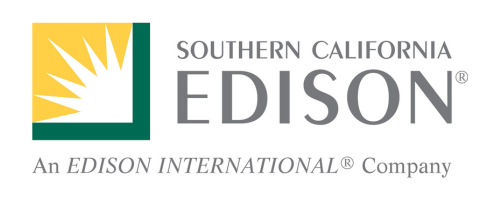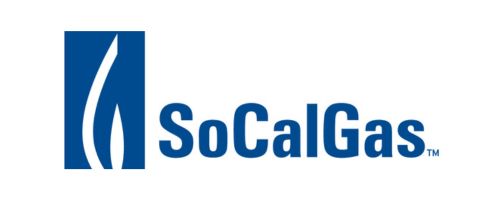Energy Policy ToolKit
A Resource for Latinas in California
Since 2018, Hispanas Organized for Political Equality (HOPE) focused on educating more Latinas about California’s climate change policy through our “Energy Policy Toolkit.” Energy issues are significant to California’s Latino communities, yet Latinas currently hold just over 4% of energy board positions. We know there is more work to do to increase Latina representation on energy and environmental decision-making tables, and to educate our communities about how to mitigate the impacts of climate change. The resources in this toolkit are designed to continue moving the needle on Latinas serving on energy boards and bring awareness to the impact energy has on our everyday lives.
In this toolkit you will find information on electric vehicles, renewable energy, and more. You will also see a policy timeline of California’s energy standards that must be met by specific deadlines to lower our carbon footprint. This toolkit covers areas where HOPE offers programming including Bakersfield, Downey, Fresno, Long Beach, Oakland, San Bernardino, San Diego, Riverside, and California at large.
A Letter from HOPE’s CEO
Welcome!
We are proud to share with you HOPE’s Energy Policy Toolkit.
Climate change is a Latina issue. Now more than ever, we must equip our communities with knowledge and resources around energy policy — one of the key factors in mitigating the negative impacts of climate change. Latinos are one of the largest and most rapidly expanding U.S. population, currently at 63.7 million, with 15.5 million living in California, and Latinas alone comprise 7.8 million. Latinos and their families will disproportionately feel the economic and health consequences of climate change. Latina voices must make themselves heard as California transitions its energy use to meet these critical carbon reduction goals. Currently, Latinas hold just over 4% of energy board and commission positions and we hope this toolkit will inspire more Latinas to apply for energy boards.
Our lives and livelihoods depend on knowledge and action.
This Toolkit builds on our last seven years of energy activities first presented at HOPE’s Latina Empowerment Day in 2017. We listened and incorporated feedback from the hundreds of Latinas who participated. With refreshed information, community resources, and our new Latina Appointments Collaborative, this Toolkit will provide the clarity and guidance our community needs to navigate the complexities around California’s rapidly evolving environmental protection efforts.
We hope the resources in this Toolkit will facilitate dialogue and motivate you to seek energy leadership positions. We must stay informed and involved in the energy issues that affect California’s 7.8 million Latinas.
We strongly encouraged community leaders to share learnings, successes, and goals with HOPE, and within their networks! Every action moves us toward a more sustainable, healthy, and prosperous future.
Sincerely,
Helen Torres, Chief Executive Officer of HOPE
Take Action for the Environment!
Toolkit
Learn the latest information on California’s goal for all electric vehicles by 2035
- Frequently Asked Questions: What is a zero emission vehicle… and more!
- Explore a map of U.S charging stations
- Learn how to request a charging station
- Find information on the current Clean Air Vehicle Decal Program
- Learn more about home charging stations and incentives from PG&E
- Read about the California Energy Commission approved a $1.9 billion investment plan to advance the state electric vehicle (EV) charging goals.
Learn about California gas companies’ latest technology
- Watch SoCalGas’ video about the power of hydrogen
- Learn about SoCal Gas’ Hydrogen Innovation Experience Project
- Check out SoCalGas’ new project the Angeles Link
Get more information on the latest energy technology – carbon capture
Check out the latest resources from California’s energy companies
- Learn how to go solar with Southern California Edison
- Check out information on an all-electric home with Southern California Edison
- Learn how to go solar with PG&E
- Read about PG&E’s Zero Net Energy activities
- Sign up and attend a PG&E virtual townhalls
SoCalGas
- Check out the work SoCalGas is doing in Orange Cove.
Southern California Edison
- Check out rebates & incentives from Southern California Edison
- Apply for financial assistance from Southern California Edison
- Learn about the Energy Saving Assistance Program from Southern California Edison
- Apply for the Southern California Edison Scholars Program. Applications open October 1, 2024.
PG&E
Learn the latest information on California’s goal for all electric vehicles by 2035
- Frequently Asked Questions: What is a zero emission vehicle… and more!
- Explore a map of U.S charging stations
- Learn how to request a charging station
- Find information on the current Clean Air Vehicle Decal Program
- Learn more about home charging stations and incentives from PG&E
- Read about the California Energy Commission approved a $1.9 billion investment plan to advance the state electric vehicle (EV) charging goals.
Learn about California gas companies’ latest technology
- Watch SoCalGas’ video about the power of hydrogen
- Learn about SoCal Gas’ Hydrogen Innovation Experience Project
- Check out SoCalGas’ new project the Angeles Link
Get more information on the latest energy technology – carbon capture
Check out the latest resources from California’s energy companies
- Learn how to go solar with Southern California Edison
- Check out information on an all-electric home with Southern California Edison
- Learn how to go solar with PG&E
- Read about PG&E’s Zero Net Energy activities
- Sign up and attend a PG&E virtual townhalls
SoCalGas
- Check out the work SoCalGas is doing in Orange Cove.
Southern California Edison
- Check out rebates & incentives from Southern California Edison
- Apply for financial assistance from Southern California Edison
- Learn about the Energy Saving Assistance Program from Southern California Edison
- Apply for the Southern California Edison Scholars Program. Applications open October 1, 2024.
PG&E
Purpose of California Energy State Agencies
California is home to a diverse array of state agencies focused on energy policy. They help establish the frameworks needed to ensure California stays on track to meet its energy and climate goals. Below is a breakdown of the California Energy Commission, California Public Utilities Commission, and California Air Resources Board.
California Energy Commission (CEC)
The CEC is California’s primary energy policy and planning agency. It leads efforts to achieve the state’s climate and energy goals.
The CEC is made up of a board of five commissioners appointed by the Governor, an executive leadership team, and various divisions and offices.
Key Responsibilities:
- Developing and implementing the state’s energy policies and plans to create a low-carbon economy.
- Setting energy efficiency standards for buildings and appliances, which have saved Californians more than $110 billion in utility bills.
- Funding research and innovation in renewable energy, energy storage, and reducing greenhouse emissions.
- Developing California’s strategy for responding to loss of energy support due to natural disasters.
California Public Utilities Commission (CPUC)
The CPUC plays a critical role in regulating services and utilities in California, ensuring safe, reliable, and affordable utility services while advancing clean energy goals.
The CPUC is made up of a board of five commissioners appointed by the Governor, staff members and various divisions and offices.
Key Responsibilities:
- Setting regulations for electricity, natural gas, railroads, telecommunication, broadband markets and water utilities.
- Overseeing renewable energy procurement under programs like the Renewables Portfolio Standard (RPS).
- Managing energy efficiency programs and incentives.
- Safeguards against unfair utility practices.
California Air Resources Board (CARB)
CARB is instrumental in addressing climate change and improving air quality through policies to reduce greenhouse gas (GHG) emissions and other pollutants.
The CARB is made up of 16 members. The Governor appoints 12 board members, an additional 4 members are appointed by the Senate and Assembly. The Board also has a team of staff members.
Key Responsibilities:
- Implementing California’s Cap-and-Trade program to limit greenhouse gas emissions from major emitters.
- Setting the state’s air quality standards at levels that protect those at greatest risk
- Collaborating on statewide climate plans like the Climate Scoping Plan, which outlines strategies to meet emissions reduction targets.
California Legislation
Understand the legislation that sets the stage for California’s current agenda on climate change.
The California Global Warming Solutions Act of 2006 required a sharp reduction of greenhouse gas emissions throughout the state. By doing so, California set the stage for a transition to a more sustainable green future.
Time Line of Major Climate and Energy Goals
| Greenhouse Gas (GHG) Goals | Energy Goals and Carbon Capture | Zero-Emission Vehicle Goals | |
|---|---|---|---|
| 2020 |
Statewide GHG emissions must be at or below 1990 levels. (Chapter 488 of 2006 [AB 32, Núñez). The state reached this goal in 2016. |
||
| 2024 |
The California Pollution Control Financing Authority Act establishes the California Pollution Control Financing Authority, which is authorized to approve financing for pollution control projects. Current law specifies eligible facilities for this financing. Qualified carbon dioxide capture facilities would be added to this list of eligible projects (AB 2731, Carrillo). |
||
| 2025 |
CARB must establish a carbon capture and storage program, including a regulatory framework and permitting process (Chapter 359 of 2022 (SB 905, Caballero]). |
||
| 2030 |
Emissions must be 40 percent below 1990 levels (Chapter 249 of 2016 [SB 32, Pavley]). |
Renewable sources must supply 60 percent of retail electricity (Chapter 312 of 2018 [SB 100, de León]). |
68 percent of new passenger vehicles sold must be zero-emission or hybrid electric (Advanced Clean Cars II Regulation of 2022, CARB). |
| 2035 |
State agencies must target net-zero GHG emissions (Chapter 368 of 2022 [SB 1206, Becker]). |
Renewable and zero-carbon sources must supply 90 percent of retail electricity (Chapter 361 of 2022 [SB 1020, Laird]). |
All new passenger vehicles sold must be zero-emission or hybrid electric (Advanced Clean Cars II Regulation of 2022, CARB). |
| 2040 |
Renewable and zero-carbon sources must supply 90 percent of retail electricity (Chapter 361 of 2022 (SB 1020, Laird). |
||
| 2045 |
The state must reach net-zero GHG emissions. Emissions must be reduced to at least 85 percent below 1990 levels (Chapter 337 of 2022 [AB 1279, Muratsuchil). |
Renewable and zero-carbon sources must supply 100 percent of retail electricity (Chapter 312 of 2018 ([SB 100, de Leon]). |
Stay in Touch
Let us know what you think about the Energy Toolkit. Is there any additional information on California energy policy you would like to see?



